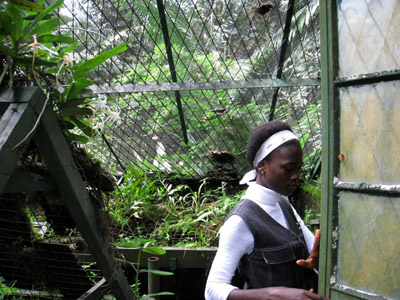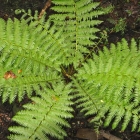Synergizing Carbon Finance and Biodiversity in Cameroon

Some people are born into interesting work, some people strive for interesting work, and some people have interesting work thrust upon them.
For me, most recently, it has been the latter.
I had been in Cameroon for 5 weeks already when Mr. Augustine Bokwe showed up next door to my seaside room in Limbe. An aging but sharp-witted and energetic man, Mr. Bokwe had recently retired from his position in Cameroon’s Ministry of Environmental Protection to accept a role as traditional chief back in his home village. Now he divided his time between the village, where he was establishing a community-run tea plantation, and the capital city Yaoundé, where he manages an environmental NGO. All of this he told me as we sampled his village tea and ate boiled Cameroonian plum in our shared kitchen one evening.
And what was I doing in here Cameroon, he asked me.
An interesting question. I explained that I had spend the better part of my first few weeks looking in to the possibilities of a carbon finance project in Cameroon, which would quantify forests based on their capacity to store carbon and their risk of being logged, then select the highest-risk, highest carbon storage areas for funded protection—a process known as REDD: Reduced Emissions from Deforestation and Degradation.
Now, with the research mostly done and the possibility of an actual project on the too-distant horizon, I was working on securing much-needed new hardware for the stagnating GIS department in the Limbe Botanic Gardens (LBG), where I work. But, in a manner that is no-doubt familiar to anyone who has worked in the region, the process was slow-going.
As the conversation between Mr. Bokwe and I continued into the evening, I learned that he was visiting Limbe in his ongoing capacity as a consultant to Cameroon’s so-called NBSAP—the National Strategy and Action Plan for every signatory country to the Convention on Biological Diversity. He suggested that my research might be relevant to the part of the NBSAP which seeks to “Integrate, as far as possible and as appropriate, the conservation and sustainable use of biological diversity into relevant sectoral or cross-sectoral plans, programmes and policies”
I couldn’t have agreed more.
After a few meetings with some of the LBG staff, we determined that I would contribute a small chapter on possible synergies between the sustainable, equitable maintenance of biodiversity, and carbon finance projects, particularly Avoided Deforestation.
While the task of weaving carbon finance and the CBD into a complimentary relationship seems messier and stickier the more I look closely at it, it has been a privilege- and no end of fascinating- to be involved in the real-time process of managing that thick wet living expanse that is the Congo basin.
As though it weren’t enough that I reside in a friendly, safe, mountainside seaside rainforest town where any time the mood suits me, I can stroll down to the beach with colleagues to eat grilled fish and plantain while the sun sets over the Biafran Blight.
Jane Boles
Comments
Be the first to comment on this story. Use the form below.

